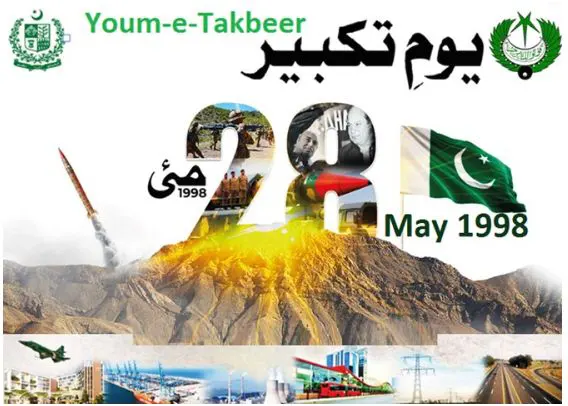Qirat Mirza
India’s involvement in the Fall of Dacca and exploding its first nuclear device prompted Pakistan to develop its nuclear capability. As a result, Pakistan conducted its nuclear tests on May 28, 1998, and became a nuclear-armed country. The day is celebrated every year as Youm-e-Takbeer.” It was intended to restore the power equilibrium and establish nuclear deterrence. Nuclear deterrence refers to deterring aggression from rival countries due to the concerns of mass destruction and regional instability. Nuclear weapons are political weapons, not intended for warfighting. Instead, they are used to deter any sort of aggression from rivals. From 1998 to until now, South Asia has not witnessed any full-scale war. However, it can’t curb conventional confrontation between two rivals. It is evident from the Kargil crises, troops mobilization in 2000, and the Balakot operation in 2019. Nuclear deterrence is not ample for avoiding other forms of aggression and resolving conflicts with India. There is still a need for conventional weapons. Additionally, economic growth, political stability, diplomacy, and a nation’s faith in defense also play an imperative role. From 1999 to 2006, both countries engaged in talks to preserve strategic stability while avoiding nuclear dangers. However, strategic stability requires that there should be no armed conflict or unresolved issues leading to a war. In the case of India and Pakistan, Kashmir has been a bone of contention for years. Despite efforts to resume bilateral relations between both countries, there has always been a deadlock on Kashmir.

While India emphasizes not bringing Kashmir as a condition to resume bilateral talks, Pakistan can’t stop talking about Kashmir. The Founder of Pakistan, Quid e Azam Muhammad Ali Jinnah declared Kashmir as the jugular vein of Pakistan. This doesn’t stop here. various organizations and people around the globe are advocating for the rights and concerns of the Kashmiri people. Until now, India and Pakistan have fought three wars over Kashmir. When India revoked Article 370 to make Kashmir its integral part, Pakistan ended all diplomatic ties with India. The future of India-Pakistan relations depends on progress over the Kashmir issue. Additionally, who can say it can’t balloon conventional confrontation over Kashmir into a full-fledged nuclear war?
Furthermore, analysts believe that the risk of nuclear war has become more apparent since 1998 as Pakistan acquired its nuclear weapons in the same year. For instance, in 2020 one year after the abrogation of Article 370, India’s Defense minister raised questions about India’s adherence to its “No First Use Policy”. While adding to his prior statement, he said ‘we are thinking of reconsidering this policy”. This is exacerbated more by the fact that Pakistan doesn’t have a “NO First Use Policy”. However, Pakistan exercises minimum nuclear deterrence. That same year, the DG ISPR, the spokesperson of Pakistan’s armed forces recounted that “We will fight till the last soldier for Kashmir”.










